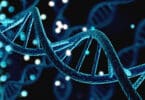The use of cannabis for women’s reproductive health is a practice that dates back thousands of years. The ancient medical text The Ebers Papyrus dated 1500 BCE to 3000 BCE described a cannabis ointment mixed with honey to aid women in childbirth. However, it’s only in recent decades that researchers discovered the endocannabinoid system (ECS) and the role it plays reproductive health. Today, many women are using cannabis during menopause.
A 2020 study found that 1 in 4 women use cannabis to treat the symptoms of menopause, and that those women choose cannabis above hormone replace therapy and other conventional medicines. A newer study of 250 women showed that 83% of them used cannabis to treat menopause-related symptoms such as sleep issues, mood swings or anxiety. 84% of the women consumed cannabis by smoking, while 78% consumed edibles.
Though these statistics are alarming to some doctors, it makes sense given the complex interplay between the ECS and the endocrine system, the body’s network of hormones or neurotransmitters that regulate all physiological functions, including reproductive health. As a result, there’s growing interest in the role of endocannabinoids as modulators of the reproductive system, as well as the role of the endocannabinoid system in menopause.
What is the Endocannabinoid System?
The endocannabinoid system (ECS) is located throughout the body, and includes CB1 receptors and CB2 receptors as well as endocannabinoids and enzymes that are involved in the activation and degradation of the receptors. The ECS plays a role in energy balance, bone metabolism, muscular health, blood flow, and even the progression of cancers.
Studies show that activation of CB1 receptors, which are found primarily in the nervous system, is responsible for increased food intake, stimulating bone formation, inhibiting oxidative stress, and preventing cancer progression. The activation of CB2 receptors, found in immune cells and peripheral nervous system, induces a reduction in appetite and body weight, inhibits bone growth, prevents vascular risk and reduces cancer cell proliferation. Variants of these receptors are involved in obesity and osteoporosis.
These receptors are activated by cannabinoids. The body can produce its own cannabinoids, called endocannabinoids. They are also found in the cannabis plant, and plant-derived cannabinoids are called phytocannabinoids. Endocannabinoids are a type of unsaturated fat derivative, of which the two most studied are anandamide (AEA) and 2-AG. AEA plays a key role in lipid metabolism, and its name comes from the Sanskrit word “ananda” meaning inner bliss, which describes the euphoric effect of this ligand. Phytocannabinoids including tetrahydrocannabinol (THC) and cannabidiol (CBD) mimic the activation action of endocannabinoids.
Links between ECS and Reproductive System
Overall, the ECS impacts a number of reproductive functions including fertility, reproduction and endocrine function. Studies show that changes in levels of sex hormones, in particular estrogen and progesterone, are strongly related to alterations in ECS activity. It’s been shown that the ECS regulates the female reproductive system through cannabinoids, and that receptors are localized to those parts of the hypothalamus that produce gonadotropin releasing hormone (GnRH), the hormone responsible for regulating the endocrine system and gamete maturation. GnRH acts through the hypothalamic-pituitary-ovary (HPO) axis, the pathway that controls parts of the female reproductive process.
Thanks for being here. We provide email updates via the Cannadelics Weekly Newsletter, which also comes full of top notch deals on products like cannabis buds, vapes and related equipment, edibles, smoking devices, cannabinoid compounds, and a whole bunch more. Getting stoned is fun. Do so responsibly!
In particular, it regulates the release of two key peptide hormones, luteinizing hormone (LH) and follicle stimulating hormone (FSH), which regulate the growth and development of the follicle and oocyte (a cell that may form an ovum), and stimulate the ovaries to produce the sex hormones, estrogen and progesterone. Various studies show that cannabinoids negatively affect reproduction by inhibiting the release of GnRH, blocking FSH and LH, and lowering levels of sex hormones.
It’s believed that this is the reason why THC affects several aspects of reproductive function. Chronic exposure to cannabinoids in rats and humans has been shown to reduce sperm count and testosterone levels. In females, chronic exposure to cannabinoids has been shown to disrupt the menstrual cycle, delay follicle maturation and inhibit release of sex hormones, estrogen and progesterone.
What is Estrogen?
Estrogen is a hormone that influences various functions in the body. Both males and females have this hormone, but it’s more dominant in females, where it regulates the development and health the reproductive system. The ovaries, adrenal glands and fat tissues produce estrogen. As well as reproductive health, estrogen contributes to cognitive health, bone health and the cardiovascular health.
There are different types of estrogen that are present at different stages in the life cycle of the body. The most common type of estrogen is estradiol, which is present in both males and females, but more prevalent in women during reproductive years. A second form of estrogen is estriol , which is present during pregnancy and prepares the body for delivery of a baby. A third type of estrogen is estrone, which is present in post-menopausal women, and is the weakest form of estrogen.
Levels of estrogen vary over the course of the menstrual cycle and over a lifetime, with significant fluctuations in the years leading up to menopause, followed by a significant drop. When an imbalance in estrogen occurs, as is natural during menopause, it can lead to the following symptoms due to the many roles estrogen plays in the body:
- Hot flashes
- Night sweats
- Mood swings
- Brain fog
- Weight gain
- Low libido
- Dry skin
- Fatigue
- Irritability
- Anxiety
- Depression
- Muscle loss
- Bone loss
- Hair loss
The Role of the ECS in Menopause
The ECS is involved in many biological functions including appetite regulation, pain management, organism development as well as the modulation of inflammatory and immune response. Because of its involvement in a variety of physiological functions, it’s a proposed therapeutic target for several conditions including metabolic disorders, heart disease, osteoporosis and cancer.

Due to its presence in the HPO axis, and its influence on the production of estrogen, the ECS plays a clear role in female reproductive health. On top, levels of estrogen play a role in other biological functions also influenced by cannabinoids, including bone health, brain health and cardiovascular health. As a result, menopausal women experience related symptoms, and are at risk for conditions such as diabetes, obesity, osteoporosis, heart disease, and cancer.
During menopause, the down-regulation of estrogen slows the metabolism, causing the accumulation of fat around the waist and stomach. One study demonstrated that the presence of CB2 variant is associated with obesity in post-menopausal women, leading to increased risk of osteoporosis. Another study demonstrated that AEA and 2-AG were present at very high levels in post-menopausal women.
Low levels of estrogen during menopause also expose post-menopausal women to loss of bone mass as well as increased bone fragility and risk of fractures. Both CB1 and CB2 play important roles in the regulation of bone cell functions such as aged bone absorption and new bone formation. Studies show a reduced efficacy of CB2 could lead to lowered bone density, and could be a marker for women at risk for osteoporosis or fractures.
Various studies show that as women age they’re at increased risk for heart disease due to falling levels of estrogen, resulting in vascular inflammation and changes in blood pressure. To treat this condition, hormone replacement therapy that stimulates Nitric Oxide (NO) production is often used. Newer studies show that AEA causes an increase in NO levels with resultant effects on the vascular system.
The way in which endocannabinoids protect vascular health remains unclear, but the activation of CB1 and CB2 receptors are suspected to be involved. One study on rats showed that AEA could be used as an alternative to estrogen replacement therapy to restore vascular health. Another study showed that vascular risk could be reduced on diabetic rats using a treatment that targeted CB2 receptors.
FINAL THOUGHTS ON THE ENDOCANNABINOID SYSTEM AND MENOPAUSE
What’s clear is that we have a lot of interesting studies showing the intricate links between female reproductive health, the endocannabinoid system, and overall health during menopause. It would appear there’s no question the ECS is potentially a reliable diagnostic marker and therapeutic target, and most definitely worthy of further studies to uncover effective therapies in the future.
Welcome one and all! Cool that you made it to Cannadelics.com. We’re an independent news platform with an eye on the burgeoning cannabis and psychedelics fields of today. Join us frequently to stay in-the-know on everything going on; and subscribe to the Cannadelics Weekly Newsletter, so you never miss a single thing.









